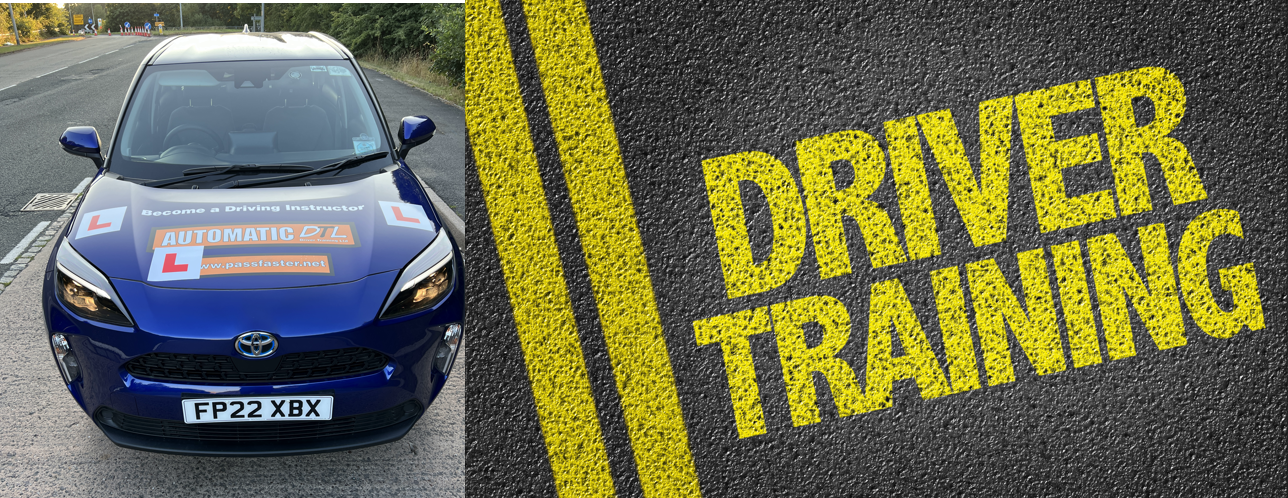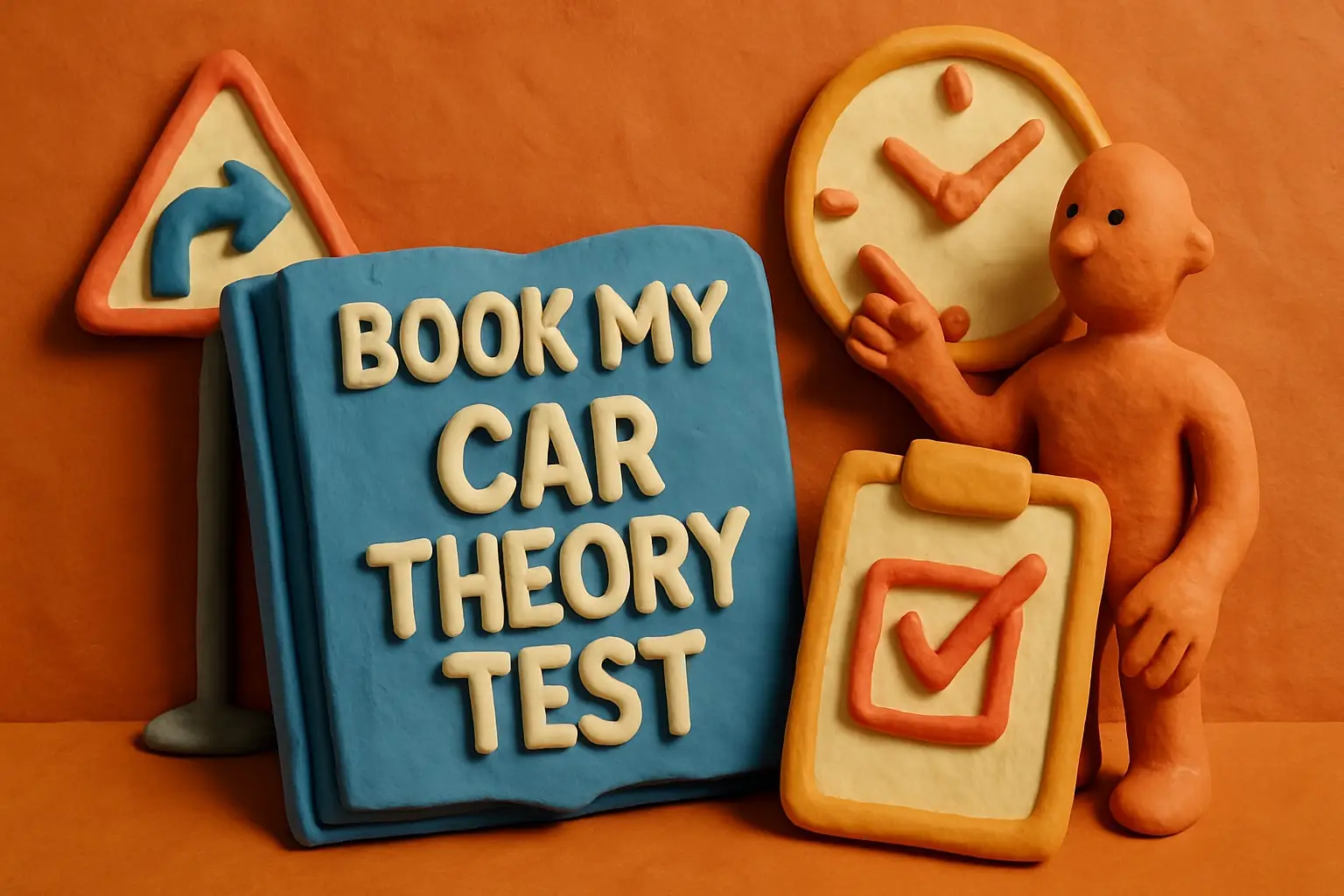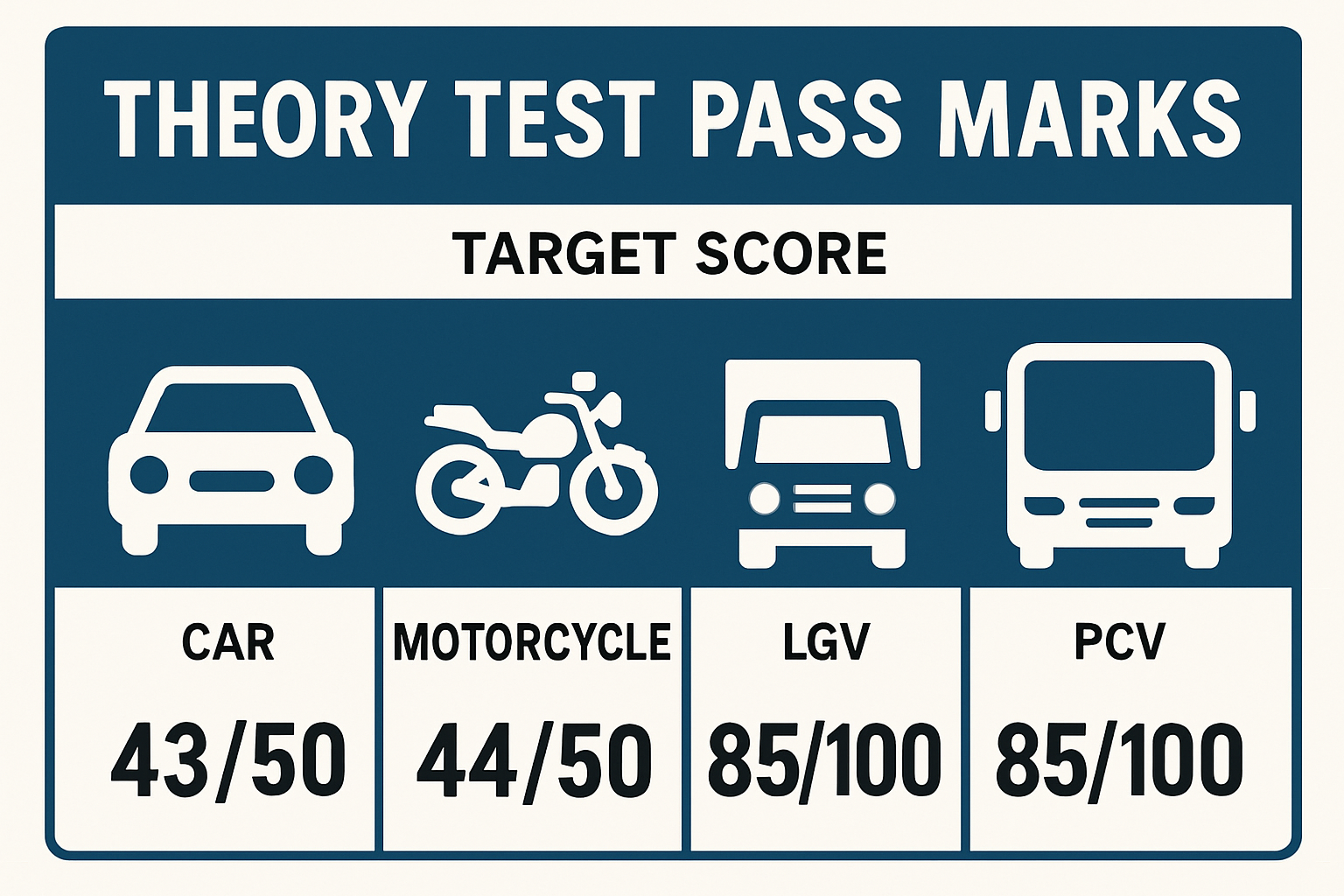
Traffic Crosses One-Way Road Ahead vs Traffic Becomes Two-Way If you’ve ever revised for the theory test, you’ll know the DVSA loves a tricky question about arrows on warning signs. Two signs that regularly trip people up are “traffic crosses one-way road ahead” and “traffic becomes two-way”.
At first glance, both involve arrows pointing in different directions — but what they mean on the road (and in the test) is very different.
Traffic Crosses One-Way Road Ahead
- What it looks like: A red triangular warning sign showing two black arrows pointing left and right across the one-way road.

- What it means: You’re on a one-way road, but there’s a junction ahead where traffic will cross your path from both directions.

- On the road: It’s easy to feel secure on a one-way system, but this sign reminds you to stay alert. At the crossing, you must check carefully in both directions and be ready to give way.
Theory Test Tip: The clue is that the arrows run side-to-side, not up and down. That means traffic is crossing, not flowing towards you.
Traffic Becomes Two-Way

- What it looks like: Another red triangular warning sign, but this time with two large arrows — one pointing up, one pointing down.
- What it means: You’re leaving a one-way system, and the road ahead now carries two-way traffic. Oncoming vehicles may appear, so lane discipline becomes vital.

- On the road: This is a big shift in awareness. Suddenly, it’s not just about what’s behind or alongside you — you must also watch for traffic directly ahead.
Theory Test Tip: Look for the vertical arrows. Up and down means traffic is coming at you.

Why the Difference Matters
- On the road:
- Mistaking the crossing sign could mean shooting across a junction without looking both ways.
- Mistaking the two-way sign could mean drifting into the wrong side of the road — a dangerous and costly error.
- In the theory test: Both signs involve arrows, and the DVSA deliberately uses them to check whether you’re paying attention to direction — sideways for crossing, vertical for oncoming.
Traditional Driving Wisdom
Back in the day, one-way roads gave drivers a sense of order and predictability. But Britain’s network of towns, villages, and city centres often throws up these surprises — places where a one-way meets a two-way, or a crossing interrupts the flow.
Good drivers always fall back on the timeless habits: observe, anticipate, and prepare. That way, no sign takes you by surprise.
Quick Comparison
| Sign | What It Looks Like | What It Means | Driver Action |
|---|---|---|---|
| Traffic Crosses One-Way Road Ahead | Two arrows pointing left and right across a vertical one-way line | Traffic will cross ahead from both sides | Slow down, look both ways, be ready to give way |
| Traffic Becomes Two-Way | One arrow up, one arrow down | One-way ends, two-way traffic begins | Keep left, expect oncoming vehicles |
How can understanding these signs help me become a safer driver?
Understanding these signs ensures you respond appropriately to different road situations, preventing accidents and making your driving consistent with road rules.
What should I do when I see a ‘traffic crosses one-way road ahead’ sign while driving?
You should slow down, check both directions carefully at the junction, and be prepared to give way to traffic crossing from both sides.
Why is it important to distinguish between these two signs while driving and during the theory test?
It’s crucial because confusing the crossing sign with the two-way sign could lead to dangerous mistakes, such as crossing into oncoming traffic or drifting into the wrong side of the road, especially since both signs use arrows to indicate direction.
How does the ‘traffic becomes two-way’ warning sign differ from the crossing sign?
The ‘traffic becomes two-way’ sign shows two large arrows pointing up and down, meaning the one-way system ends ahead and two-way traffic begins, so you should expect oncoming vehicles and keep to your side.
What is the meaning of the ‘traffic crosses one-way road ahead’ warning sign?
This sign indicates that you are on a one-way road, but there is a junction ahead where traffic from both directions will cross your path, so you need to stay alert and give way if necessary.
Contents
- 1 Traffic Crosses One-Way Road Ahead
- 2 Traffic Becomes Two-Way
- 3 Why the Difference Matters
- 4 Traditional Driving Wisdom
- 5 Quick Comparison
- 5.1 How can understanding these signs help me become a safer driver?
- 5.2 What should I do when I see a ‘traffic crosses one-way road ahead’ sign while driving?
- 5.3 Why is it important to distinguish between these two signs while driving and during the theory test?
- 5.4 How does the ‘traffic becomes two-way’ warning sign differ from the crossing sign?
- 5.5 What is the meaning of the ‘traffic crosses one-way road ahead’ warning sign?


